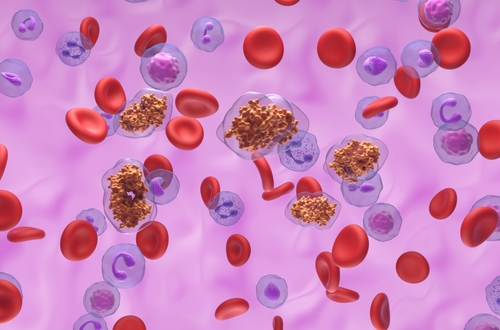SOHO 2023: Focus on GVHD
It is important to monitor patients who have elevated CMV levels to detect infection and progression early.
Results from this meta-review suggest that more prophylactic strategies are needed in the fight against GVHD.
Intensive salvage therapy had a 54% complete remission rate whereas non-intensive salvage therapy was lower at 18%.
The study used only single-agent tacrolimus for GVHD prophylaxis.
Non-relapse mortality was low, and there was good GVHD control with the prophylaxis.
Results were further improved when Orca-T was given in combination with a regimen of busulfan, fludarabine, and thiotepa.
Findings from this pilot study suggest that EVs may be a promising avenue for developing ocular GvHD therapies.
Differences in microRNA expression could help identify individuals at risk of developing GVHD.
Despite advances in understanding GVHD, outcomes remain poor for patients with T-PLL.
There was no increased risk of graft-versus-host disease with earlier administration.
The drug also did not appear to increase the risk of GVHD, though it did improve symptoms in 2 patients.
The study authors noted that PTCy-based prophylaxis provided reasonable GVHD control but did not affect OS or GRFS.
The incidence of grade III-IV GVHD was reduced in the cohort who received ATG as well.
Cytomegalovirus prophylaxis may improve outcomes after transplantation.
Though the degree of mismatch did not change GVHD incidence, mismatch was associated with GVHD.
In one case, early GVHD treatment with prednisolone, hemodialysis, ultrafiltration, and dobutamine improved heart health.
Advertisement

















 © 2025 Mashup Media, LLC, a Formedics Property. All Rights Reserved.
© 2025 Mashup Media, LLC, a Formedics Property. All Rights Reserved.